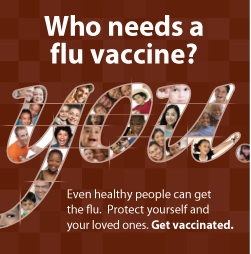The night before I was leaving for a three-week medical mission trip, I was called urgently to the ICU to see Rachel (name altered), a previously healthy woman in her late 40s, slightly overweight with dirty blonde hair. She had started a new job as a customer service agent. Rachel was the sickest patient I had seen in months, and I could not figure out what was going on.
A week before her hospitalization she had fever, abdominal pain, headache and cough, and then it quickly developed into severe shortness of breath and pneumonia. All her preliminary tests for the flu and common causes of pneumonia were negative. Within 24 hours of hospitalization she required a breathing tube and the ventilator settings were piped up to the maximum: 100 percent oxygen with highest pressures. And yet, she was still not getting sufficient oxygen to her heart and brain.
 I placed her on three antibiotics to control her infection, the pulmonary doctor did a bronchoscopy to obtain culture from deep inside her lungs, and the nurses tended to all of her needs to keep her alive. As I stood with her somber husband and two tearful teenage daughters outside the glass doors of the ICU room, I described the grave circumstance. "I am not sure if she will make it, but we will do our best," I told them.
I placed her on three antibiotics to control her infection, the pulmonary doctor did a bronchoscopy to obtain culture from deep inside her lungs, and the nurses tended to all of her needs to keep her alive. As I stood with her somber husband and two tearful teenage daughters outside the glass doors of the ICU room, I described the grave circumstance. "I am not sure if she will make it, but we will do our best," I told them.
Overnight, Rachel's condition worsened. A heart surgeon was called and a last ditch effort was made to provide her oxygenation with extracorporeal membrane oxygenation. ECMO provides temporary oxygen to patients whose heart and lung are severely damaged. Often it is used as a heart-lung machine during cardiac bypass surgery.
The cause of such sudden and severe pneumonia was unclear. I asked the family questions: if Rachel had travelled and acquired MERS, Middle East Respiratory Syndrome. Had she been in contact with any animals or persons who were severely ill, or been exposed to any environmental hazards at her new job? "No," her husband replied to all of my questions.
Then, as I was boarding my flight, the laboratory called me. The bronchosopy test had shown Rachel had influenza A, the seasonal flu. The previous two tests had been false negatives, but the more definitive bronchoscopy test had come positive. She was already on multiple antibiotics and Tamiflu, yet she was still critically ill.
During my trip in the urban slums and villages of India, as I visited patients who had their lungs ravaged by another germ, tuberculosis, I wondered if Rachel had survived. Each day in the world nearly 4,000 patients die of tuberculosis, a disease, which is entirely preventable and treatable, if proper precautions are taken. And yet time and time again we fail.
While I was gone, my partner cared for Rachel and updated me. By Christmas Eve, a week into her hospitalization, Rachel was off the ECMO, and by New Year's the breathing tube was removed.
The day after I came back from my medical mission trip, I saw Rachel in a regular room smiling and comfortably breathing. Her hair was less disheveled, and she apologized for not remembering who I was. She was preparing to go to the rehabilitation hospital where my wife, who is also a physician, would care for her.
We don't think of flu as a life-threatening illness in otherwise healthy young or middle age adults, yet it is. In a bad flu season as many as 50,000 deaths may occur due to flu related illnesses.
The vaccine, though it is not perfect, is helpful. Last year's vaccine was estimated to be 56 percent effective. A recent report estimated that last year flu vaccination prevented 6.6 million flu-associated illnesses, about the population of the state of Arizona. Also, vaccination prevented 3.2 million medical visits, and 79,000 hospitalizations, the number of fans in a full NFL stadium.
Unfortunately, 50 percent of the population is not vaccinated for the flu, making themselves and others around them vulnerable. Rachel told me that she just had not gotten around to getting the vaccination this year but, "I am certainly getting vaccinated from now on."